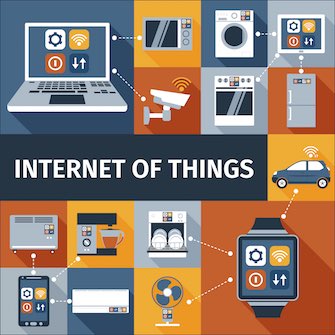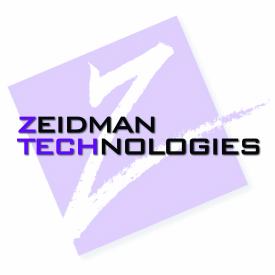 The Internet of Things (IoT) is a label given to a very broad collection of Internet-enabled data analysis services which have come into vogue in recent years. The IoT sector is a little difficult to adequately define because it covers such a broad range of industry. It’s pretty near impossible to run a business without some form of information technology and an Internet connection augments data services in an incredibly valuable way. Essentially the Internet of Things is being heralded as a new wave of technology that achieves such an amazing speed of data analysis that needed information can be recalled and processed for valuable insights at a moment’s notice. The applications for the IoT are immense and growing even larger to include pregnancy planning services, gun safety and patient monitoring devices. With public WiFi coming to major cities such as New York City, where one trash company has filed a grant for installing wireless sensors on public trash cans, the ability to access the Internet with IoT devices will only become easier.
The Internet of Things (IoT) is a label given to a very broad collection of Internet-enabled data analysis services which have come into vogue in recent years. The IoT sector is a little difficult to adequately define because it covers such a broad range of industry. It’s pretty near impossible to run a business without some form of information technology and an Internet connection augments data services in an incredibly valuable way. Essentially the Internet of Things is being heralded as a new wave of technology that achieves such an amazing speed of data analysis that needed information can be recalled and processed for valuable insights at a moment’s notice. The applications for the IoT are immense and growing even larger to include pregnancy planning services, gun safety and patient monitoring devices. With public WiFi coming to major cities such as New York City, where one trash company has filed a grant for installing wireless sensors on public trash cans, the ability to access the Internet with IoT devices will only become easier.
We’ve been covering the Internet of Things extensively here on IPWatchdog and it’s clear that this sector of technology has a lot of space to grow. We’ve explored data communications technologies like Bluetooth which stand to play a major role in the industry as it grows larger. We’ve followed patent auctions of IoT technologies indicating an increased amount of IP activity in this field. We’ve also noted growing regulatory concerns at the Federal Trade Commission over cybersecurity and data privacy issues. If anything is clear, more people are focusing on IoT now than ever before.
From a business standpoint, one issue in designing Internet-enabled smart devices for everyday use is writing the software code that operates an embedded system in a pacemaker or a toothbrush or a vehicle, or anything. Smart device developers are in a sense limited by the microprocessors currently available in an industry dominated by the likes of ARM (NASDAQ:ARMH) and Intel (NASDAQ:INTC). Many of these processors are designed for complex devices like smartphones or cars with a much larger number of gates than necessary for devices like, say, a smart toaster that might only have five functions or so. The processors are not horribly expensive but the time needed to write the operating system code can be, as a company typically has to generate an OS that helps a device user interface with the hardware. Intel might make the processor, but Microsoft Corporation (NASDAQ:MSFT) has to develop the Windows operating system which makes the desktop computer capable of running software applications. It can become time-prohibitive to develop large operating systems for an embedded system on a smart desk lamp or a smart door.
[Internet-Things]
 One service available to help IoT device developers more easily create the real-time operating system (RTOS) necessary to run applications on a smart device is SynthOS. Developed by Zeidman Technologies of Cupertino, CA, SynthOS is an automated generator of RTOS code which uses patented algorithms which lets users input functionality at an abstract level. SynthOS enables a user to develop a customized RTOS which is compatible with ANSI C language standards. After a SynthOS user inputs generalized, abstracted functionality, the service can then automatically generate OS code, including mutexes, mailboxes and semaphores and any other mechanisms for communication or synchronization. Soon, Zeidman Technologies will be announcing an agreement reached with a major Silicon Valley semiconductor company regarding the SynthOS technology.
One service available to help IoT device developers more easily create the real-time operating system (RTOS) necessary to run applications on a smart device is SynthOS. Developed by Zeidman Technologies of Cupertino, CA, SynthOS is an automated generator of RTOS code which uses patented algorithms which lets users input functionality at an abstract level. SynthOS enables a user to develop a customized RTOS which is compatible with ANSI C language standards. After a SynthOS user inputs generalized, abstracted functionality, the service can then automatically generate OS code, including mutexes, mailboxes and semaphores and any other mechanisms for communication or synchronization. Soon, Zeidman Technologies will be announcing an agreement reached with a major Silicon Valley semiconductor company regarding the SynthOS technology.
Bob Zeidman, the inventor of SynthOS, president of Zeidman Technologies and a guest contributor on IPWatchdog.com, says that the idea for SynthOS first occurred to him more than 12 years ago while working with Apple on their flat-panel Studio Display technology. “The intelligence was all in the Mac, but the display needed some intelligence” to respond to a button input, Zeidman said. “You can push a button on the display, the message goes back to the Mac and the Mac figures out what to do and sends a message back, but it’s not very efficient to do it that way.” At the time, Zeidman said that he received some interest but most computing device manufacturers were opting for the more powerful processor options as the need for minimalist OS design for low-power processing simply wasn’t valuable enough yet.
With more and more Internet-connected devices being created every day, however, the ability to write a customized RTOS that lets a developer utilize a more cost-effective processor. “Everyone in engineering knew [the Internet of Things] was going to happen, we just needed to know when,” Zeidman said. “I thought it would happen, but I didn’t know what the scale would be.” As we’ve reported before, there are those in the tech industry who predict that there will be 50 billion Internet-connected devices in operation by the year 2050. Interest in SynthOS began to blossom over the past two to three years, according to Zeidman, prompting him to refocus his attention on developing SynthOS.
Zeidman has been issued patents on SynthOS and other technologies that he’s developed, so he’s a practiced patent applicant. With the exception of one patent that took 12 years to issue, he said that he has not experienced major issues with the patent system in our country as implemented by the U.S. Patent and Trademark Office. The one issue he did reflect upon was the difficulty of getting a patent issued when the examiner doesn’t understand the technology being submitted for patent approval. In one example, Zeidman filed a patent for an operating system which manages tasks. “The examiner would search for tasks but use a very broad term, he’d find [prior art] that had nothing to do with operating systems,” he said, noting that he ended up needing to hire an attorney to prove that the prior art wasn’t relevant. At other times, he has been notified of good prior art, which may lengthen the road towards final patent approval but is much more beneficial. “There’s two ways for this process,” Zeidman said. “Either the examiner understands the technology and it feels good going back and forth, strengthening the patent and narrowing claims. The other kind, it happens a lot, the examiner doesn’t understand the tech, you can go back and forth but from the first office action, you realize that this may never end.”
SynthOS is only one part of the IoT future being developed by Zeidman Technologies. SynthSys is a service being created for smart device developers which analyzes the software constraints of the OS that will run on the smart device and generates a hardware plan. As Zeidman notes, this changes the process of IoT device development to be more like the development of smartphone apps. “If you develop an app for smartphones today, you don’t need to know about the smartphone’s hardware, but with an embedded system you start with hardware,” Zeidman said. With both SynthOS and SynthSys, a business developing a smart device can go from idea to prototype much more quickly.

![[IPWatchdog Logo]](https://ipwatchdog.com/wp-content/themes/IPWatchdog%20-%202023/assets/images/temp/logo-small@2x.png)


![[Advertisement]](https://ipwatchdog.com/wp-content/uploads/2024/04/Artificial-Intelligence-2024-REPLAY-sidebar-700x500-corrected.jpg)
![[Advertisement]](https://ipwatchdog.com/wp-content/uploads/2024/04/UnitedLex-May-2-2024-sidebar-700x500-1.jpg)
![[Advertisement]](https://ipwatchdog.com/wp-content/uploads/2024/04/Patent-Litigation-Masters-2024-sidebar-700x500-1.jpg)

![[Advertisement]](https://ipwatchdog.com/wp-content/uploads/2021/12/WEBINAR-336-x-280-px.png)
![[Advertisement]](https://ipwatchdog.com/wp-content/uploads/2021/12/2021-Patent-Practice-on-Demand-recorded-Feb-2021-336-x-280.jpg)
![[Advertisement]](https://ipwatchdog.com/wp-content/uploads/2021/12/Ad-4-The-Invent-Patent-System™.png)






Join the Discussion
No comments yet.